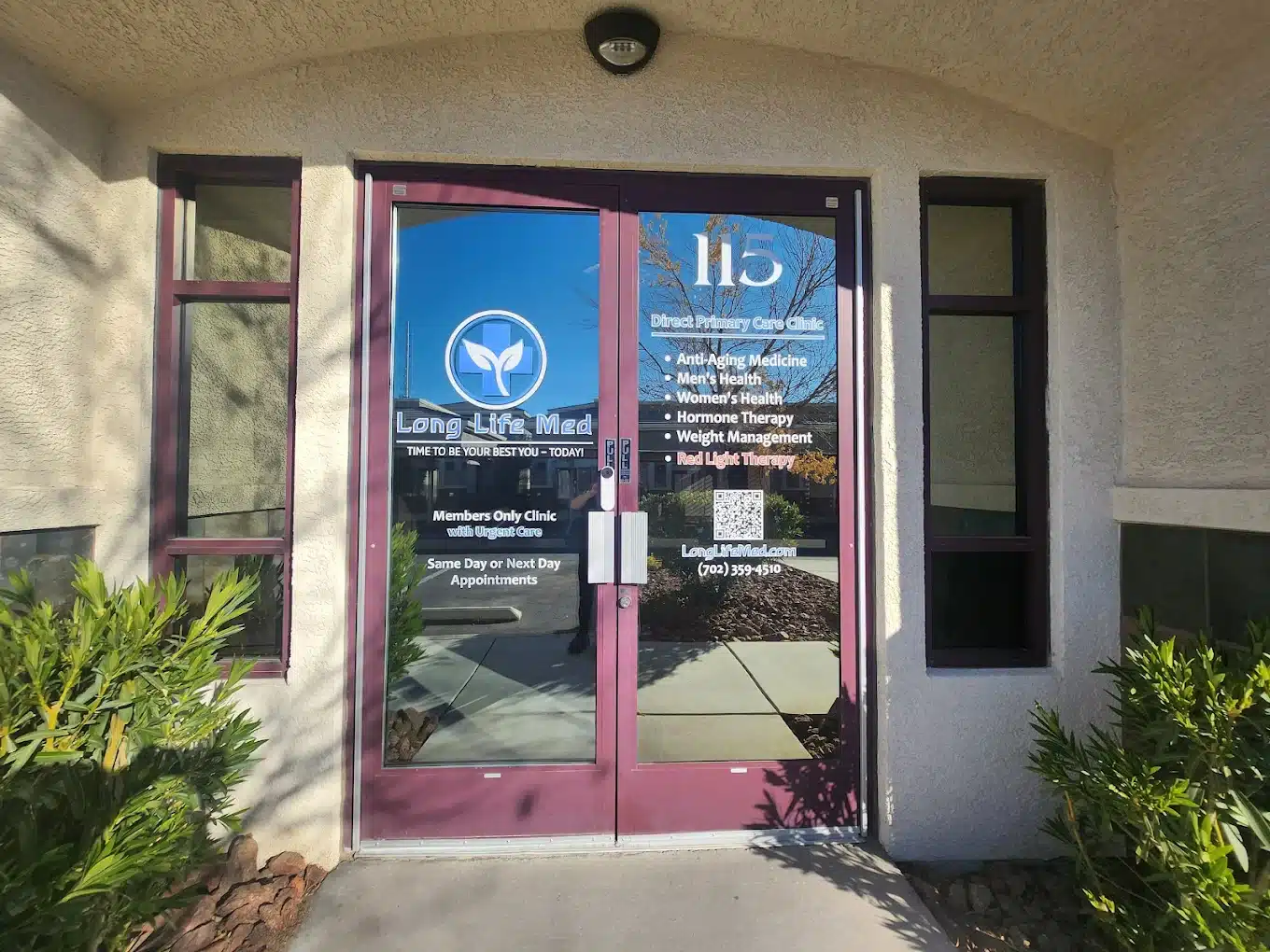How to Save Money and Get Real Healthcare in 2026
Executive summary
That unlocks a practical pairing: Catastrophic + DPC—major-medical protection plus unlimited, relationship-based primary care.
New federal changes also make DPC compatible with HSAs and treat DPC fees as HSA-qualified medical expenses beginning 2026.
Starting in 2026, more people can buy catastrophic plans on the ACA Marketplace (no longer just under-30/hardship).
Bottom line for Las Vegas patients and employers: Catastrophic + DPC can cut costs, improve access, and reduce surprise bills—if you understand the rules. [CMS +1],[HHS], [KFF], [KFF (HSAs)].
Why this is a big deal (policy changes for 2026)
- Catastrophic eligibility expands in 2026. CMS announced rule changes that will allow a broader group of consumers to buy catastrophic plans on the Marketplace starting in 2026 (previously limited mostly to <30 or hardship). [CMS].
- DPC + HSA compatibility (starts 1/1/2026). Recent federal action clarifies that DPC memberships won’t disqualify HSA eligibility and that DPC fees count as HSA-qualified medical expenses starting in 2026 (details below). [KFF], [IRS summary on §213], [DPC Frontier].
What catastrophic plans cover (and what they don’t)
- The same 10 Essential Health Benefits (EHBs) as other ACA plans (hospitalization, Rx, maternity, mental health, etc.) and free preventive care (e.g., vaccines, screening colonoscopies, well-woman exams). [Healthcare.gov].
- At least 3 primary-care visits each year before the deductible (plans vary: some charge $0, many charge a small copay—see examples below). This “3-visit rule” is distinct from preventive care. [eCFR], [Healthcare.gov].
- Everything else is generally subject to the big deductible (catastrophic deductibles track the annual ACA maximum out-of-pocket). [Healthcare.gov], [Verywell Health explainer].
⚠️Important nuance about $0 preventive vs problem visits
Preventive is $0 when coded preventive.
If you present with a problem (cough/fever, back pain, pain complaints, hormonal issues, etc.), the visit is problem-focused and not preventive — cost sharing applies.
How high can copays go? On Nevada catastrophic, the first 3 PCP visits may be $0–$60 (varies by plan, e.g., Anthem $40), then everything is deductible/0%. On HDHPs, non-preventive PCP often hits the deductible immediately. [Healthcare.gov Preventive], [Anthem Catastrophic eHealth], [HPN Catastrophic SBC].
💡 Did you know?
Two basic urgent-care visits or a problem-focused primary care visit can already cover ~3 months of DPC plus several tests/meds through our wholesale partners.
One ER visit for stitches can cost more than two years of DPC membership.
How DPC at Long Life Med complements catastrophic health insurance plans
With a Direct Primary Care membership (starts at $100/month or $1,000/year prepaid) you get:
- Unlimited Same-Day/Next-Day primary-care visits, extended time, text/email access, and proactive care coordination.
- Included when medically necessary: in-clinic antibiotics; common rapid tests (strep, COVID, flu, blood glucose, urinalysis, mono, fecal occult blood, BV); plus wholesale pricing on other labs, imaging, and in-house pharmacy-dispensed meds and supplements.
- Functional & Longevity orientation (on higher-tier plans and other Longevity Plans): root-cause medicine, advanced prevention, metabolic and hormonal optimization, and care that actually listens and educates.
- We do not bill insurance for DPC services (DPC ≠ concierge). Concierge clinics often still bill insurance (that’s why they require a PPO) and charge a retainer; DPC typically does not bill insurance at all so DPC practices can also accept the insured. [AAFP “DPC vs Concierge”], [AAFP policy].
- The money you save from getting a Catastrophic or HDHP can go towards pre-tax HSA dollars that can be used to pay your DPC membership (up to $150/month/person or $300/month/family) and other HSA-covered expenses like copays or cash pay for labs, imaging, meds, physical therapy, and sometimes even supplements, gym memberships and massages
Las Vegas cost estimates: Catastrophic + DPC (illustrative, not quotes)
Local benchmark (Clark County): Sierra Health & Life EPO Catastrophic off-exchange 2024 base (non-tobacco) for age 30 ≈ $175.64/mo. Using HHS’s federal age curve to scale, you get an approximate 2024 premium by age (your actual 2026 premium will differ). [SHL 2024 rates], [CMS age-curve guidance].
- 21: ~$155/mo
- 30: ~$176/mo
- 40: ~$198/mo
- 50: ~$276/mo
- 60: ~$435/mo
(Rounded from SHL’s 2024 sheet and the federal curve; premiums vary by carrier, network, smoker status, subsidies, and year.) [SHL 2024 rates], [CMS market-rules summary].
Now add Long Life Med DPC
- Individual: $100/month (or $300/quarter or $550 semi-annually or $1,000/year prepaid).
- Couple: $180/month (or $540/quarter or $990 semi-annually or $1,800/year prepaid).
- Family of 3: $255/month (or $765/quarter or $1,402.50 semi-annually or $5,550/year prepaid).
- Family (Employer group option): as low as $75/employee/mo and $64/family-member/mo via Employer-Sponsored DPC (see below).
- Functional Medicine: $200/month or $600/quarter or $1,100 semi-annually or $2,000/year.
- Longevity Medicine: $500/month or $1,500/quarter or $2,750 semi-annually or $5,000/year.
Why the pairing works: your catastrophic plan shields you from very high costs, while DPC eliminates most day-to-day spending and surprises in primary care and urgent care (and often gets you faster answers and earlier treatment). [Healthcare.gov], [AAFP].
DPC + catastrophic insurance in practice (realistic scenarios)
- You wake up with strep-like symptoms.
DPC: same-day visit, rapid strep included, antibiotics included if needed; follow-up texts.
Catastrophic alone: office visit copay (if within first 3); test + Rx subject to plan rules—can jump to deductible if coded problem-focused and outside the 3-visit allowance. [Healthcare.gov (catastrophic)]. - Chronic back pain flare.
DPC: longer visit, conservative care, Rx at wholesale, PT referral guidance, lifestyle coaching.
Catastrophic alone: PCP copay (first 3), but imaging, PT, pain clinic costs commonly hit the deductible—often hundreds per episode. [Verywell Health explainer]. - You cut your hand and need wound repair.
DPC: Same-day visit, simple wound repair included (steri-strips, sutures, or Dermabond). David, NP, is experienced and willing to spend the necessary time—even up to an hour—for careful repair or foreign-body removal. Antibiotics are included if medically necessary.
Catastrophic alone: Many urgent cares avoid wound repair and refer you to the ER, where unnecessary ER visits can incur $1,000s in out-of-pocket costs plus separate charges from ER physicians, as they are often independent contractors. Even if covered, these costs are usually subject to the deductible. [Healthcare.gov (catastrophic)]. - You develop a severe migraine or tension headache.
DPC: Free visit. Prompt treatment at the clinic with wholesale medications or IV therapy if needed, minimal wait, and follow-up texts.
Catastrophic alone: Urgent care/ER bills are typically problem-focused, so visits count toward the deductible. You’ll also wait hours for care and pay separately for medications and facility charges. [Verywell Health explainer]. - You experience sudden chest pain or panic symptoms.
DPC: Because we know your full history and risk factors, you can call us even at night, and we can triage quickly. If you’re low-risk and likely having anxiety, we can evaluate you in-clinic with an EKG and provide rapid reassurance. If high-risk, we’ll send you directly to the ER with the right documentation, avoiding delays.
Catastrophic alone: All chest pain is processed as emergent. You’ll undergo a full hospital workup—labs, imaging, cardiology consult—incurring very high costs that apply to the deductible unless catastrophic coverage has already kicked in. Note that copays for doctors and radiologists are separate from the hospital bill, as they are often independent contractors. [Healthcare.gov (catastrophic)]. - Hormonal concerns.
DPC: thorough history, targeted labs at wholesale, BHRT discussion, longitudinal follow-up with the add-on BHRT plan that is affordable and includes medications.
Catastrophic alone: visits beyond the first 3 + labs typically fall to deductible, then copays for labs (even after the deductible) are typically higher than wholesale prices at Long Life Med. [Healthcare.gov].
Price comparison (examples from our clinic)
Examples below reflect Long Life Med’s current wholesale/in-clinic pricing when dispensed/ordered through our DPC. Retail/urgent-care prices are local Las Vegas estimates and can vary widely. Always ask for a Good Faith Estimate.
Labs (cash price vs. Long Life Med wholesale)
| Test | Typical retail cash price | Long Life Med member price |
|---|---|---|
| CBC | $29 [Quest, Labcorp) | $3.12 |
| CMP | $49 (Quest, Labcorp) | $4.37 |
| HbA1c | $39 (Quest, Labcorp) | $3.52 |
| TSH | $49 (Quest, Labcorp) | $3.90 |
| Testosterone — Total | $69 (Quest, Labcorp) | $6.24 |
| Progesterone | $89 (Quest) / $59 (Labcorp) | $9.36 |
| hs-CRP (cardiac) | $65 (Quest) / $59 (Labcorp) | $7.80 |
| Vitamin D 25-OH | $75 (Quest) / $99 (Labcorp) | $17.16 |
Quest typically charges a $6 physician fee. Co-pays with commercial insurance are often ~half of retail cash price—except basic tests (CBC, CMP, A1c), which are typically $0 copay.
👩🏻🏭Real Patient Example
Kezia’s OB-Gyn ordered a hormone panel. Even after meeting her $2,000 deductible on a solid plan, her lab copay was almost $300 —- the same panel would have cost $65 at Long Life Med with a membership.
⚠️ WARNING
If your provider bills insurance for a lab the plan won’t cover (or without proper ICD-10/pre-auth), the lab can bill you the full retail price -— far higher than cash-pay rates. Once insurance is billed, you can’t switch to cash prices retroactively. Example: Vitamin D billed $300+ instead of $75/$99 cash-pay at Quest/Labcorp or $17.16 at Long Life Med.
Medications & Supplements (90-count unless noted)
| Product | Cash Price (GoodRx / Amazon) | Typical insurance copay (catastrophic & general context) | Long Life Med |
|---|---|---|---|
| Tenofovir DF 300 mg (90) | As low as $38–$122/mo with regular GoodRx coupon (pharmacy-dependent): [GoodRx Tenofovir] and [GoodRx Viread]. | Catastrophic: Usually applies to deductible first (you pay full cost until deductible; then 0% coinsurance) — see NV SBCs. Non-catastrophic context: Tenofovir is often non-preferred / specialty, commonly $35–$400+ / mo until deductible or with coinsurance. [Sierra Health and Life], [healthplanofnevada.com], [ehealth] | $34.40 for 3 months $12.80 for 1 month |
| Rosuvastatin 10 mg (90) | $8–$15/mo with GoodRx coupon: [GoodRx Rosuvastatin]. | Catastrophic: to deductible first; then 0%. Non-catastrophic context: Tier-1 generic $5–$20 copay is common. [Sierra Health and Life], [healthplanofnevada.com] | $7.40 for 3 months $3.80 for 1 month |
| Meloxicam 15 mg (90) | $3–$10/mo with GoodRx coupon: [GoodRx Meloxicam]. | Catastrophic: to deductible first; then 0%. Non-catastrophic context: Tier-1 generic $5–$20 copay. [Sierra Health and Life], [healthplanofnevada.com] | $4.70 for 3 months $2.90 for 1 month |
| Metformin 500 mg (90) | $5–$12/mo with GoodRx coupon: [GoodRx Metformin]. GoodRx | Catastrophic: to deductible first; then 0%. Non-catastrophic context: Tier-1 generic $5–$20 copay. [Sierra Health and Life], [healthplanofnevada.com] | $4.70 for 3 months $2.90 for 1 month |
| Amoxicillin/Clavulanate 875/125 (7–10 days) (generic Augmentin) | $7–$25 with GoodRx coupon: [GoodRx Amox/Clav]. | Catastrophic: to deductible first; then 0%. Non-catastrophic context: Often Tier-1/2; many plans $10–$40 copay. [Sierra Health and Life], [healthplanofnevada.com] | Free (if medically necessary) |
| Orthomega 820 (180 softgels) | $162.99 on Amazon: [Amazon Orthomega 820]. | Supplements typically not covered. | $77.94-$86.60 depending on membership tier and prepaid status |
Catastrophic/HDHP context: many Rx costs hit the deductible first (you pay the full allowed amount until deductible), then 0% after; some non-catastrophic plans still have $5–$20 Tier-1 generics, but specialty drugs can run $100–$500+/mo even after tiers/coinsurance. SHL Catastrophic SBC (NV), HPN Catastrophic SBC (NV), Anthem NV catastrophic example.
👩🏻🏭Real Patient Example
Kezia used to pay $100/month copay for Tenofovir DF (for Chronic Hep B) on one plan because it was on a specialty tier, then $35/month on a “better” plan the next year.
At Long Life Med, 90 tabs cost $34.40 (≈$11.47/mo) cash.
Later, NP David switched her a newer and better medication with less side effects which her GI doctor also agreed with and recommended, with a manufacturer coupon that covers her copays — her out-of-pocket is now $0.
Those coupon-funded copays also accumulate toward her plan’s out-of-pocket max, so a hospitalization/surgery later in the year could be $0 out-of-pocket. (Plan and manufacturer rules vary)
💡 Why we use OrthoMolecular (especially Orthomega 820)
We stock and personally use OrthoMolecular because they’re pharmaceutical-grade supplements with strict quality control and cold-chain integrity — our shipments are overnighted directly to the clinic, so they don’t sit in hot warehouses or delivery trucks (a common issue with mass-market fulfillment).
Orthomega 820 uses triglyceride-form fish oil (better absorbed and typically gentler on the GI tract) rather than the ethyl-ester form used in many bargain brands. That means higher bioavailability and less oxidation risk — and you actually get the anti-inflammatory benefits you’re paying for instead of the opposite (with bad fish oil).
Las Vegas Urgent Care & ER Pricing vs. Long Life Med (DPC)
| Service / Visit Type | Typical Self-Pay in Las Vegas | Long Life Med Price |
|---|---|---|
| CareNow – Standard Visit (Tier I) (includes up to 2 in-house tests or oral Rx meds) | $180 (CareNow Pricing & FAQ) | Included in DPC |
| CareNow – Advanced Visit (Tier II) (adds X-ray + injectable meds) | $235 (CareNow Pricing) | Included, but some meds, tests, and imaging with extra fee at wholesale pricing, starting from $40 from imaging partners |
| CareNow – Complex Visit (Tier III) (laceration repair, FB removal, joint injections, etc.) | $350 (CareNow Pricing) | Included, suturing, foreign body removal, meds if needed |
| Concentra – Urgent Care Visit | $165–$200 self-pay range for Las Vegas (Solv Concentra Self-Pay Pricing) | Included, but some meds, tests and imaging with extra fee at wholesale pricing, starting from $40 from imaging partners |
| UMC Quick Care | $100–$250 walk-in self-pay (Solv UMC Quick Care LV) | Included, but some meds, tests and imaging with extra fee at wholesale pricing, starting from $40 from imaging partners |
| Rapid Strep or Flu test | Included in Tier I (CareNow $180) | Included, (results in 5-10 minutes) |
| Rapid COVID test (not antigen) | Included in Tier I (CareNow $180) | Included, (results in 5-10 minutes) |
| Rapid RSV test | Included in Tier I (CareNow $180) | $20 (results in 15 minutes) |
| Rapid HIV 1&2 + Syphilis | Often not offered in urgent care; must be referred to Labcorp/Quest HIV 1&2 = $85 (Quest), $99 (Labcorp) Syphilis = $52 (Quest), $59 (Labcorp) | $30 (results in 30 minutes) |
| EKG | $75–$150 at Concentra & UMC; CareNow bills as add-on with Tier II/III (CareNow Pricing) | Included |
| Laceration / wound repair / foreign body removal | CareNow bills at Tier III ($350); ER cost often $2,000+ for facility + physician fees (GoodRx ER Pricing) | Included (DPC, no extra) |
| Emergency Room (ER) | $650–$1,200+ for moderate acuity without insurance, plus add-ons for imaging/tests (TalktoMira ER Costs) (GoodRx ER Pricing) | Not through DPC; catastrophic insurance applies |
💡 Did you know?
One ER visit for stitches can cost more than two years of DPC membership.
Two basic urgent-care visits can already cover ~3 months of DPC plus several tests/meds through our wholesale partners.
With Long Life Med, urgent care–level needs are already included.
🙍🏻♂️ Real Patient Example : Colonoscopy, cystoscopy & gallbladder — cash + DPC
👩🏻🏭 Real Patient Example : Spine pain & MRI—insurance hoops vs DPC
Kezia had a prior cervical fusion and new symptoms suggesting adjacent segment disease. They don’t tell you this at surgery, that once you fuse a spine, the above and below that will also start having issues years later.
👨🏻💼 Real Patient Example : Knee pain — cash-pay MRI & cash-pay orthopedic surgeon
David’s supposed meniscal tear, which the surgeon said was not
Employer-Sponsored DPC for Small & Medium Businesses (Sept–Nov is decision season)
Offer Group DPC now while employees are reviewing benefits. At Long Life Med, group rates can be as low as $75/month per employee and $64/month per family member (add catastrophic insurance separately for major events). This can drop total healthcare spend 20%–50% vs. the traditional “HMO or PPO only” approach when you factor fewer ER/urgent-care visits and wholesale diagnostics. [AAFP employer value].
👥 Employer Group Plans Now Available
Give your employees real healthcare access for as low as $75/month per employee and $64/month per family member.
Perfect for small & medium businesses in Las Vegas renewing their plans this fall.
Learn About Group DPC PlansHow to enroll for Healthcare in 2026 (step-by-step)
- Confirm your eligibility for catastrophic in 2026 (eligibility expands). [CMS].
- Compare catastrophic plans on Nevada Health Link / Marketplace (networks = mostly EPO/HMO; out-of-network is generally not covered except emergencies). Check the SBC for: first-3 PCP visit copays, Rx tiers, and deductible. [Nevada Health Link] [Healthcare.gov].
- Join Long Life Med DPC
- Standard DPC $100/month or $1,000/year prepaid
- Functional Medicine Plan $200/month or $2,000/year prepaid
- Full Longevity Plan $500/month or $5,000/year prepaid.
- Pick your tax tool: HSA or FSA (not both general-purpose at the same time).
- HSA (available with HSA-eligible HDHPs; in 2026, pairing with catastrophic or Bronze becomes possible; DPC fees treated as HSA-qualified). This is a savings account that can earn interest or can be invested like your retirement accounts, but you can only use what you have on the HSA bank. However, unlike the FSA that you can lose if you don’t use that year, you can keep banking the HSA and use it in later years. [KFF] [Motley Fool: HSA vs FSA].
- FSA (available via employer; you can’t have a general-purpose FSA and contribute to an HSA simultaneously; a limited-purpose FSA for dental/vision is allowed with HSAs). You can use the full amount on the FSA annual bank at the beginning of the year, before you even fully paid for it, but you have to use it all at the end of the year or you lose it. If you used the whole FSA amount early that year, and then quit or lose your job before you fully paid into that bank, you don’t have to keep paying for it. [IRS Pub 969], [OPM FAQ].
- Set up monthly budget: catastrophic premium + DPC + (optional) HSA/FSA contributions.
- Use DPC first for nearly all routine/urgent needs; save catastrophic for the big stuff.
🩺 Pair Catastrophic Coverage + DPC for Complete Care
Starting 2026, you don’t have to choose. Protect yourself from high medical bills and get unlimited primary care at Long Life Med with plans starting at $100/month or $300/quarter or $550 semi-annually or $1,000/year.
View Membership OptionsCaveats & fine print (read this)
- Networks & out-of-network: Catastrophic plans are commonly EPO/HMO; outside network care is usually not covered except emergencies—read your SBC carefully. DPC is always out-of-network and not covered. [Healthcare.gov].
- 3 PCP visits rule ≠ unlimited $0 care: Only preventive is $0. The first 3 PCP visits may have $0–$60 copays depending on the plan; other services at/after the visit often bill to deductible. [HMSA SBC], [Kaiser SBC], [Healthcare.gov Preventive].
- DPC vs Concierge & PPO: Concierge often requires/uses PPO insurance and bills insurance for care while also charging a retainer to the patient just to have extended access; DPC does not bill insurance (your membership covers primary care and urgent care). [AAFP], [AAFP (FPM)].
- Medicare/Medicaid: At this time, Long Life Med cannot accept Medicare or Medicaid patients for DPC memberships, but we do have a Waitlist.
- HSA/FSA mechanics: For 2026 forward, DPC fees are expected to be HSA-eligible; you generally cannot fund an HSA if you also have a general-purpose FSA (limited-purpose FSA is okay). Always confirm with your tax advisor/HR. [KFF], [IRS Pub 969], [OPM FAQ].
Call to action
- Individuals: Pair Catastrophic (2026) with Long Life Med DPC ($100/month or $1,000/year prepaid). Get unlimited Same-Day/Next-Day care, wholesale labs/meds, and serious prevention—then let catastrophic protect you from the big stuff.
- Employers (SMBs): Lock in Group DPC from $75/employee/mo and $64/family-member/mo and add a wrap (catastrophic/HDHP) for hospital-level risk. September–November is renewal season—let’s model your ROI now.
- HSA/FSA: In 2026, DPC + HSA becomes straightforward. Until then, you can still use FSA dollars (if offered) for eligible out-of-pocket medical care. [IRS Pub 969].
Quick reminder about insurance & our practice
- DPC is not insurance. We do not bill insurance for DPC services. Aside from HSA/FSA reimbursements of your invoices, our memberships, services, and retail supplements are not covered by commercial insurance. Prescriptions filled at outside pharmacies may still be processed by your insurance; meds filled in-clinic are cash-pay at our wholesale prices (often lower than copays). [AAFP].
- Medicare/Medicaid: We are not accepting Medicare/Medicaid patients for DPC at this time.







